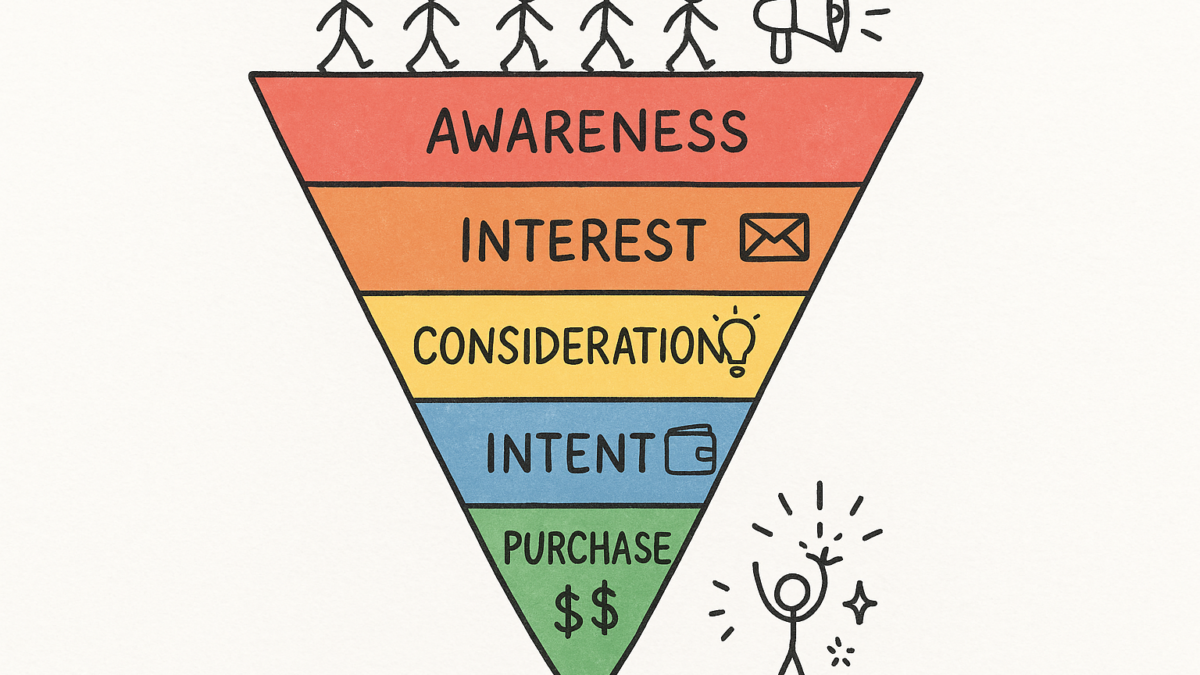What Are Inbound Funnels? A Complete Guide for Marketers
Table of Contents
Introduction
In the digital-first world of 2025, attention is currency—and inbound funnels are your bank. Whether you’re a SaaS startup, a B2B marketer, or an eCommerce brand, understanding inbound funnels is crucial to turning interest into impact.
But what exactly are inbound funnels? How do they differ from traditional marketing funnels? And more importantly—how do you build one that converts?
Let’s break it down.
What Is an Inbound Funnel?
An inbound funnel is a strategic marketing model that guides potential customers from first awareness of your brand to final purchase—using helpful content, personalized experiences, and trust-building tactics rather than intrusive advertising.
Unlike outbound marketing (think cold emails and pushy ads), inbound funnels attract prospects organically—typically through blog posts, SEO, social media, webinars, and lead magnets.
Key Characteristics of Inbound Funnels:
- Pull-based instead of push-based
- Value-driven content at every stage
- Optimized for long-term trust and retention
- Measurable through tools like HubSpot, aalign.io, or Google Analytics
Why Inbound Funnels Matter in 2025
According to HubSpot’s 2024 State of Marketing report, 61% of marketers say inbound delivers higher ROI than outbound. Why?
Because today’s customers want to discover solutions on their own terms. Interruptive marketing is dying. Inbound funnels empower buyers—giving you qualified leads that are more likely to convert.
The 4 Stages of an Inbound Funnel
Let’s unpack each stage of the funnel and explore how to optimize it:
Attract (Top of Funnel – TOFU)
Objective: Bring in the right audience
Use valuable content to capture attention and drive traffic to your site.
Tactics:
- SEO-optimized blogs (like this one)
- Social media content
- YouTube videos
- Podcasts
- Infographics
Example: A B2B HR SaaS company publishes a blog post titled “Top 10 Employee Retention Strategies for 2025” to rank on Google and attract HR professionals.
Engage (Middle of Funnel – MOFU)
Objective: Turn visitors into leads
Once visitors land on your content, it’s time to capture their information and educate them further.
Tactics:
- Lead magnets (eBooks, whitepapers, checklists)
- Webinars or demos
- Email sign-up forms
- Case studies
Real-World Stat:
B2B brands using gated content see 2x higher lead conversion rates (Source: Demand Gen Report).
Convert (Bottom of Funnel – BOFU)
Objective: Nurture leads into paying customers
Now that leads are qualified, help them make a decision by showcasing trust and ROI.
Tactics:
- Personalized email campaigns
- Free trials or consultations
- ROI calculators
- Success stories and testimonials
Example: A digital agency sends a case study showing how it increased organic traffic by 300% for a similar client.
Delight (Post-Purchase)
Objective: Turn buyers into brand advocates
Your funnel doesn’t stop at purchase. Continue to nurture and upsell existing customers.
Tactics:
- Loyalty programs
- Feedback surveys
- Exclusive content
- Affiliate or referral programs
This stage powers word-of-mouth marketing—still one of the most powerful growth levers in 2025.
How to Build an Inbound Funnel (Step-by-Step)
Here’s a simplified step-by-step guide:
- Define your buyer personas
- Map out your customer journey
- Create content tailored to each funnel stage
- Optimize your website for lead capture
- Automate email nurturing using tools like HubSpot, Mailchimp, or aalign.io
- Track performance with analytics dashboards
- Refine based on funnel drop-offs and engagement data
Pro Tip: Integrate CRM tools like aalign.io to unify your lead journey, improve segmentation, and accelerate deal closure.
Tools to Support Inbound Funnels
- HubSpot CRM – For automating campaigns and managing contacts
- Google Analytics 4 – For tracking funnel performance
- Clearscope / SurferSEO – For SEO content optimization
- Intercom – For chat-based lead nurturing
- aalign.io – For B2B lead progression and CRM alignment
Common Mistakes to Avoid
- Focusing too much on traffic, not conversions
- No clear CTA at each stage
- Skipping lead nurturing
- Not segmenting your audience
- Underinvesting in BOFU content
Final Thoughts: Inbound Funnels Are a Must-Have in 2025
Inbound funnels aren’t just a marketing tactic—they’re a growth system. When done right, they help you generate qualified leads, nurture trust, shorten sales cycles, and increase customer lifetime value.
Whether you’re just getting started or refining your funnel strategy, remember: value attracts, relevance converts.
Ready to Grow with Inbound?
If you’re a B2B brand looking to scale smarter, iTMunch can help. Our content syndication, lead generation, and CRM alignment services are tailored to fuel your funnel—from top to bottom.
👉 Contact us today to build an inbound engine that drives real results.





